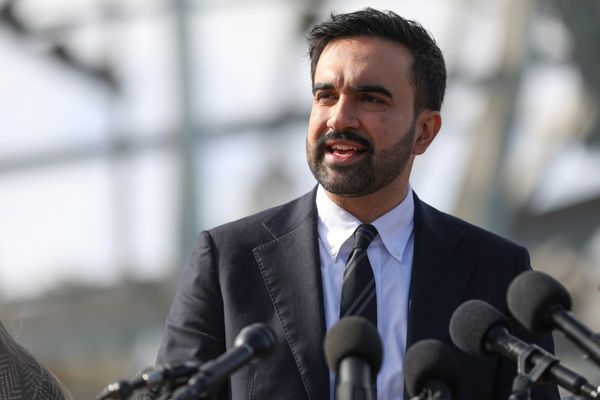
The conclusion that Russia interfered in the 2016 U.S. election, primarily to aid Donald Trump and harm Hillary Clinton, is a finding of the U.S. intelligence community.
However, a significant counter-narrative has emerged concerning intelligence received in 2016 that alleged a plan by the Clinton campaign to “smear” Trump by amplifying accusations of Russian interference, potentially to distract from her private email server scandal.
The “Durham Annex”
MAGA’s New Russiagate ‘Evidence’ Was Likely Made Up by the Kremlin
— Rolling Stone (@RollingStone) August 1, 2025
Details: https://t.co/lOYhrq5mhe pic.twitter.com/YhE04XOiM2
According to a May 12, 2023, report (known as the “Durham annex“) authorized for public release by Senator Chuck Grassley, U.S. intelligence agencies, specifically the FBI, received “Sensitive Intelligence” in 2016 from a foreign intelligence service source known as “TI.”
Reports indicate that FBI Director Kash Patel found the classified annex to former Special Counsel John Durham’s final report among thousands of sensitive and classified documents in “burn bags” in a hidden room inside FBI headquarters.
According to The New York Times, this intelligence detailed alleged plans by the Clinton campaign to use allegations of Russian interference to damage Trump’s candidacy.
These intelligence reports included what appeared or purported to be hacked emails, with two seemingly originating from the Open Society Foundations (OSF), a non-profit organization that was indeed hacked by Russian intelligence services in 2016.
The purported author of some of these OSF emails, Leonard Benardo, later stated to the FBI that the emails “did not look familiar to him” and that he “did not draft the emails,” although one sentence “sounded like something he would have said,” adding to the ambiguity of their direct authenticity.
Clinton’s supposed “plan”
The only thing the Durham Annex showed was that Durham tried to bury the fact that his entire investigation was based on evidence manufactured by the Russians.
— Jim Stewartson, Antifascist(@jimstewartson) August 1, 2025
The core of the “TI” intelligence involved explosive allegations that Clinton approved a plan proposed by a foreign policy advisor, Julianne Smith, to “smear Donald Trump” by magnifying accusations of Russian interference.
The objective, as stated in the memo, was to “divert the constituents’ attention from the investigation of Clinton’s compromised electronic correspondence.” One memo even claimed the Clinton team collaborated with the FBI-affiliated cybersecurity firms CrowdStrike and ThreatConnect to feed anti-Trump narratives to the media and stir public distrust toward Russia. This claim has been seized upon by Trump as supposed proof of a “deep-state conspiracy” against him.
Intelligence analysts and FBI officials, however, noted significant caveats about the “TI” intelligence. The FBI assessed it as “likely not credible” due to “multiple layers of hearsay,” “potential exaggerations,” “editorialization,” and “translation errors.”
While CIA assessments did not definitively find the material to be outright Russian fabrications, they explicitly warned that it could be products of Russian manipulation. This intelligence was considered so sensitive that it triggered briefings for top officials in 2016, including President Obama, Vice President Biden, and FBI Director James Comey.
Tulsi Gabbard’s “treasonous conspiracy” claims
Let’s be clear: Treating an appendix to Durham’s report as a “smoking gun” is comical.
— josh woodson (@newponics) July 31, 2025
Durham failed in court, didn’t prove anything, & this annex is just more spin for the gullible.
Pick a lane.https://t.co/ZDHFuWXCFr
Adding to the complexity, President Trump’s Director of National Intelligence (DNI) Tulsi Gabbard released declassified memos and statements she directed in July 2025 through the Office of the Director of National Intelligence (ODNI).
According to Gabbard, the original Russiagate narrative was built on partisan manipulation and lacked concrete evidence of vote tampering, arguing that the investigation unfairly maligned Trump and that agencies like the CIA and FBI failed to vet their sources properly.
However, critics argue her report misrepresents the broader conclusions of the U.S. intelligence community, which unanimously agreed that Russia interfered in the 2016 election to aid Trump, even if there was no proven collusion between the campaign and the Russian government.
While Trump and conservative media now emphasize Gabbard’s report and the declassified “Durham annex” as validation of their long-standing claims that the Russia investigation was a partisan smear, the intelligence community’s own analysis indicates that much of the “evidence” about the alleged Clinton plan likely originated from Russian intelligence operations designed to sow discord in U.S. politics.
This creates a paradox where Trump may be unwittingly or deliberately using actual Russian disinformation to “prove” that the investigation into Russian election interference was itself misinformation, effectively echoing Kremlin-crafted narratives to discredit an investigation into Kremlin interference.
Some political analysts argue that Trump’s revival of the Russiagate counter-narrative is also a calculated distraction from the intensifying Jeffrey Epstein investigation, which has drawn renewed scrutiny due to recent revelations about Epstein’s political and social connections and calls for more transparency.











